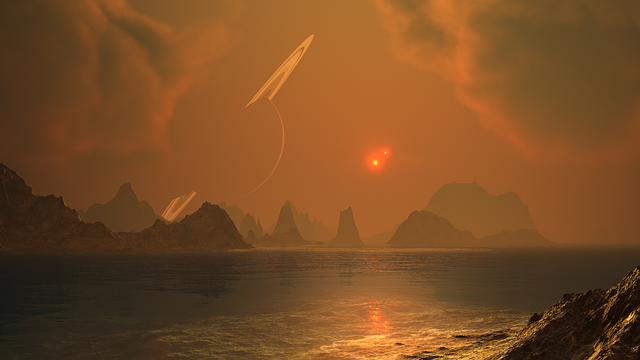Saturn megastorms have been erupting every 20 to 30 years and are creating "enormous cloud disturbances" that can last for a long period, according to a new study published earlier this month by researchers from the United States and Australia. Although storms in the giant gas planet in our Solar System have been detected in the past, this is the first time that astronomers further understood the weather phenomenon.
One of these giant storms in Saturn is known as the Great White Spot, which produces not only cloud anomalies but also massive thunderstorms that can move across the planet. Unlike the Great Red Spot storm in Jupiter, the Saturn storms are periodic and offer clues that such weather events can also occur in other celestial bodies with an atmosphere.
Saturn Megastorms

In the study published in the peer-reviewed journal Science Advances on August 11, researchers not only re-affirmed the existence of "planetary-scale giant storms" on Saturn that erupts quasi-periodically, but also determined their long-lasting, deep effect on the planet. In total there have been at least six recorded events in the past, with the latest one back in 2010.
In 2015, the research team used the Very Large Array observatory in New Mexico to investigate the deep response of Saturn's troposphere to the megastorms. The team found long-lasting effects of all mid-latitude giant storms, in addition to the remnant effect of the Great White Spot in 2010.
The findings show that the Saturn storms consist of a mixture of equatorial storms reaching up to hundreds of years old and potentially an unknown older storm located 70 degrees north of the giant gas planet.
The study used an ammonia anomaly map that shows the movement of ammonia vapor in Saturn's atmosphere via storm dynamics in an extended meridional migration. In relation to the findings, the 2010 Saturn storm split into two different components that left a gap at 43 degrees north of the planet's latitude.
Great White Spot
The Great White Spot, also called Great White Oval, are periodic storms and white in appearance that are visible from Earth when using telescopes. Their visibility is also due to their gargantuan size, given the nature of the planet-circling storms that are only unique to Saturn.
Meanwhile, Jupiter's Great Red Spot is violent, as well as larger and more stable since it has lasted for at least 342 years already, according to the National Aeronautics and Space Administration. Jupiter's mammoth oval-shaped storm system was first observed by Robert Hooke in the year 1664.
Although not as popular as the Great Red Spot, the Great White Oval of Saturn is the most intense storm that the international Cassini mission observed on its atmosphere, according to the European Space Agency. This phenomenon can wrap around the whole planet, like those from the great white spots of 2010 that lasted for more than six months, according to the Science Advances study.
Related Article : Earth's Protector: Saturn Keeps Asteroids From Crashing Into The Planet
© 2025 NatureWorldNews.com All rights reserved. Do not reproduce without permission.





